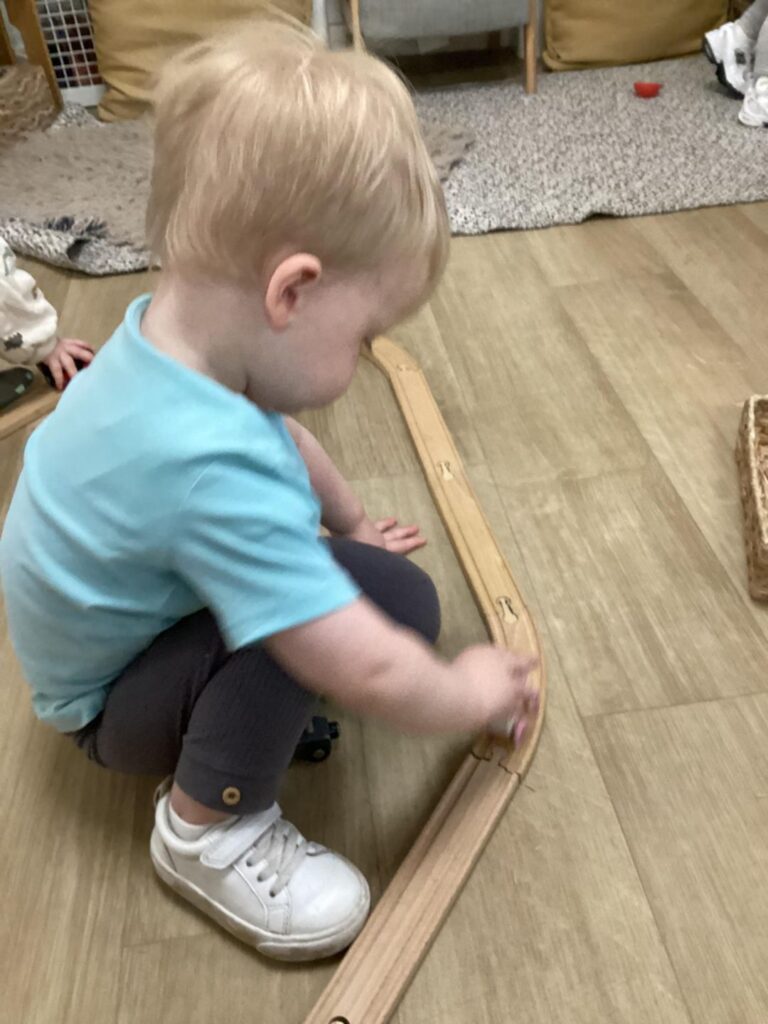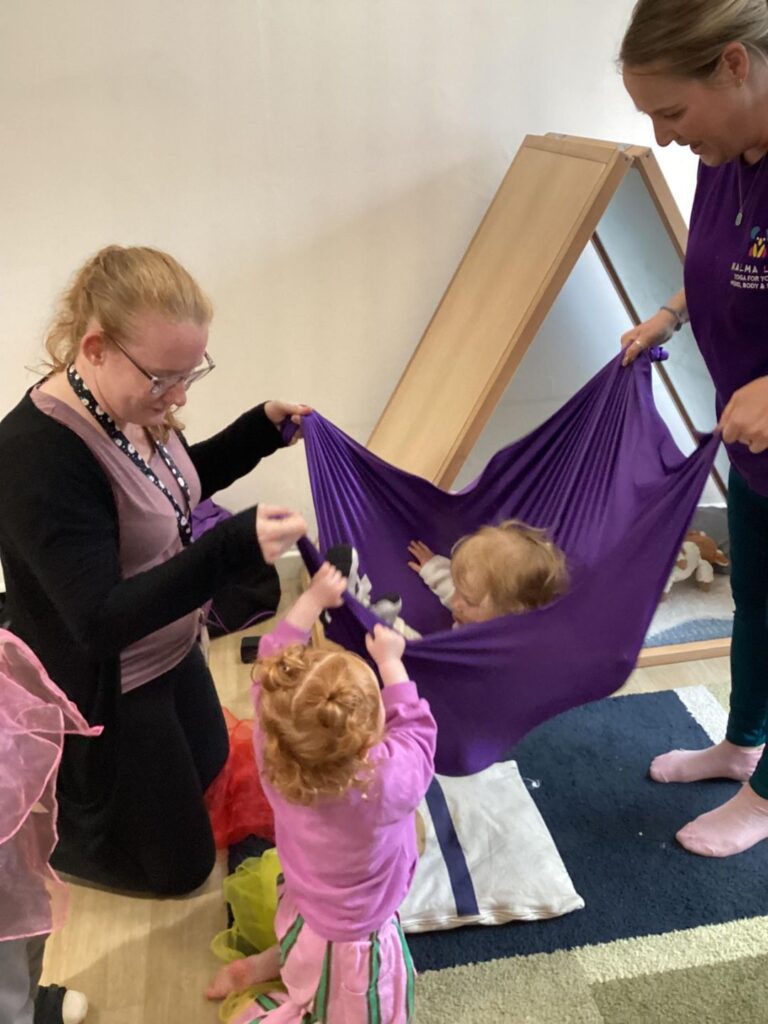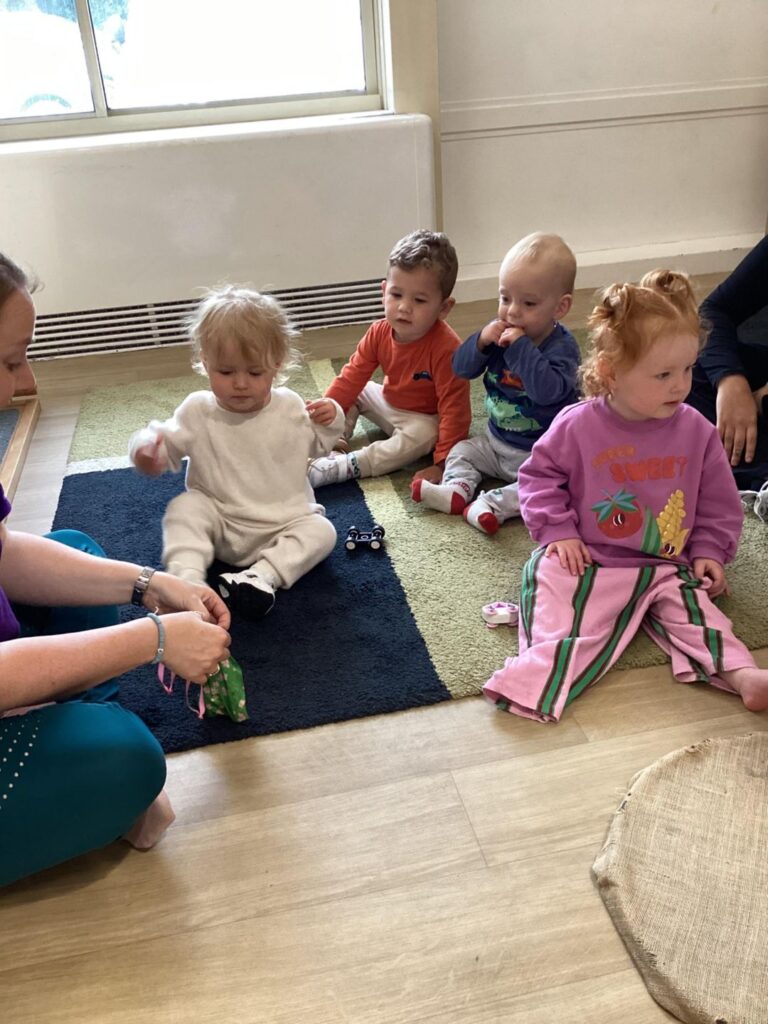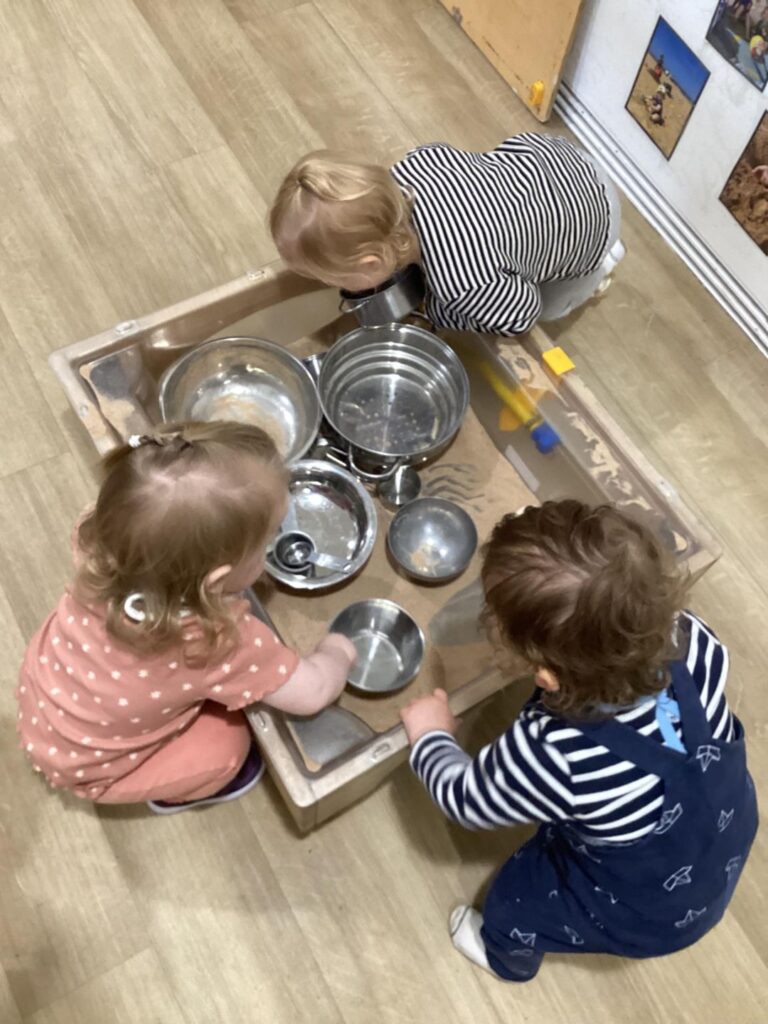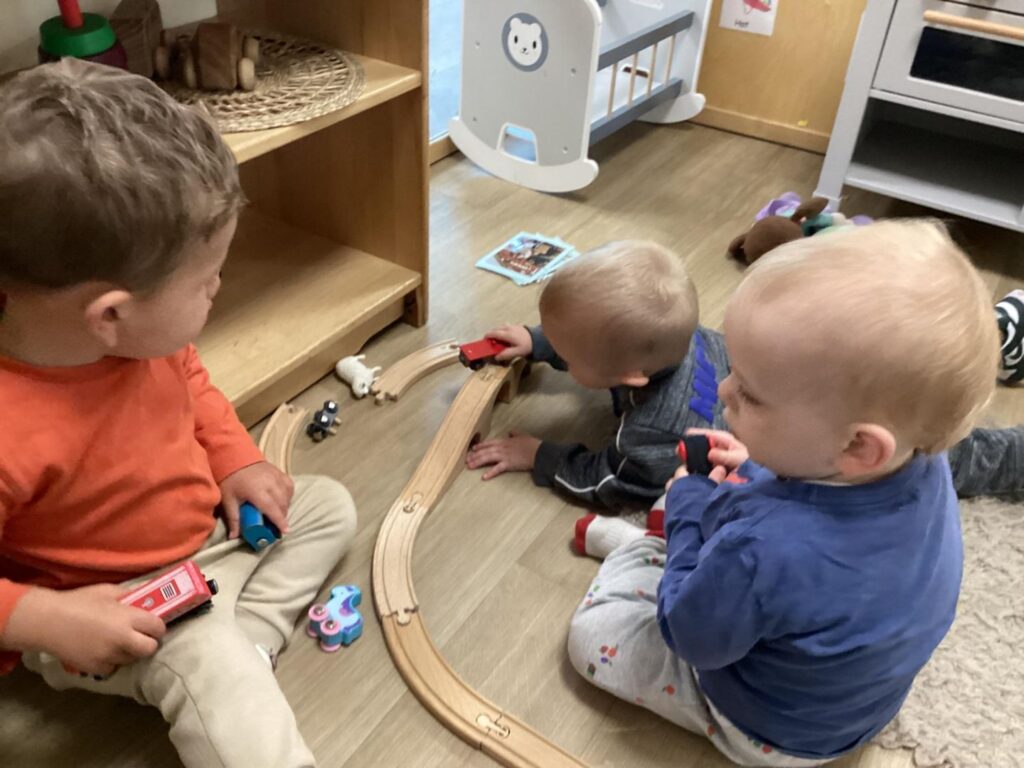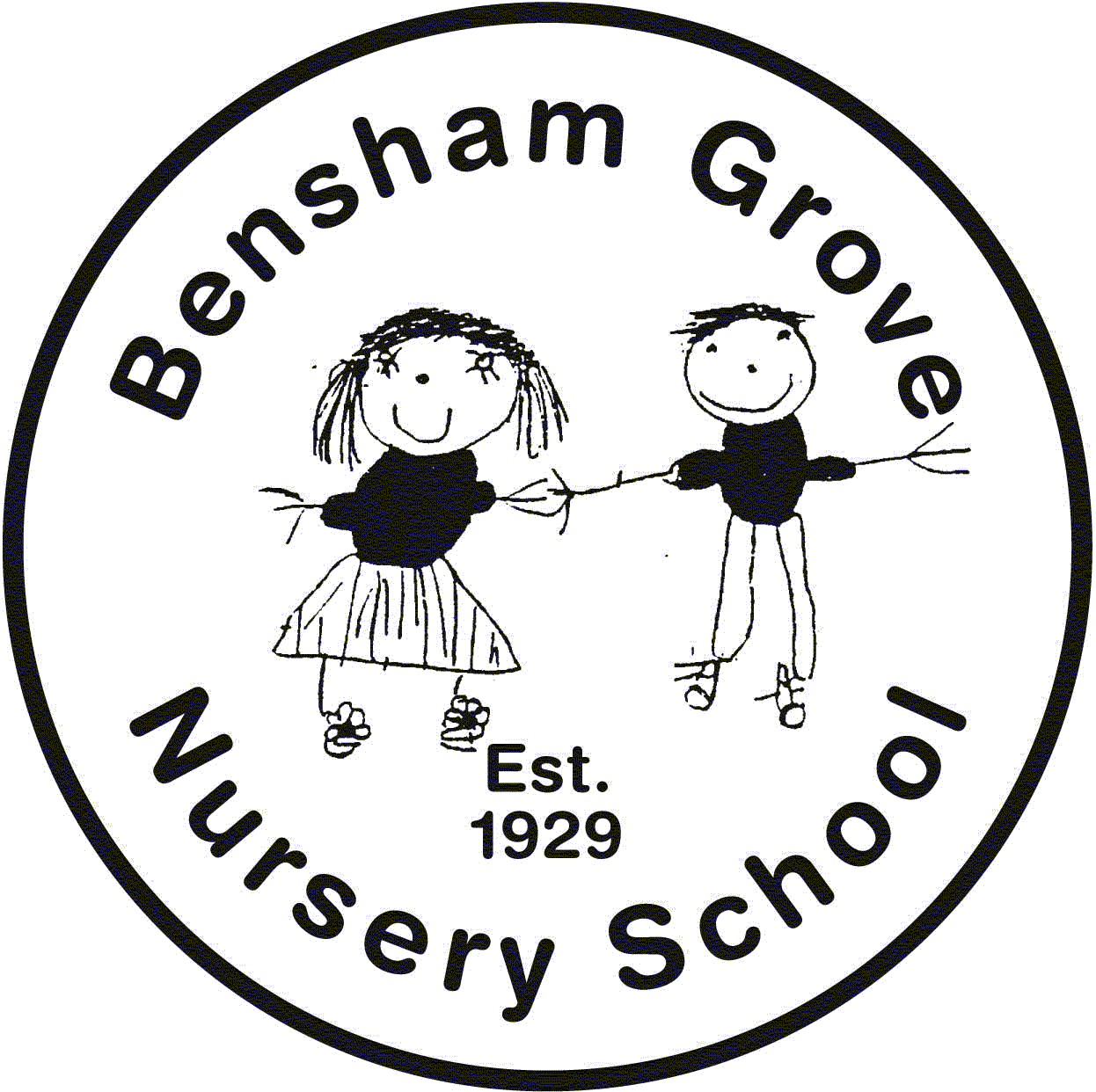The Den:
Another busy week in the den as we continue the children’s interest in vehicles by exploring train tracks. The children have also been experimenting some schematic learning by filling and emptying metal resources in the sand.
Characteristics of affective learning:
On Monday the children participated in another baby yoga session with Faye. They had lots of fun during this session as they danced to music and used good gross motor skills to shake pom-poms and voil.
Using the stretchy licra was a great way to promote schematic learning as the children were enveloped then picked up and swayed side-to-side. Faye ends her session with bubbles which is always a favourite with the children. They speak “bubble… pop” as they use their fingers to pop them
Physical and fine motor development:
The children have really enjoyed the sand this week as our main activity. We added some various metal resources like cups, spoons, sivs and scoops to experiment with filling and emptying. The children showed good grasp and control as they scooped the sand into different sized containers. This was a great opportunity to incorporate new vocabulary like “fill, scoop, sprinkle” and “pat pat”. We are always amazed by the children’s ability to pick up new words.
The children have also enjoyed playing in the tunnel this week. They displayed good control as they bend down, then crawl through the tunnel.
We have been looking at trains this week as the children show such interest in vehicles. The children needed some support with attaching the wooden pieces together, but really enjoyed pushing the trains around. Lots of the children were able to repeat back “train” and “choo-choo”.
Parents as partners
What is schematic learning?
A schema or schematic learning style are described as repeated patterns that allow children to make sense of the world around them.
Some of the most common types of schemas observed:
- Trajectory – creating lines in space by climbing up and jumping down. Dropping items from up high.
- Positioning – lining items up and putting them in groups.
- Enveloping – covering themselves or objects completely. Wrapping items up or placing them in containers.
- Rotating – enjoys spinning items round and round. Likes to run around in circles or being swung round.
- Enclosing – adding boundaries to play areas e.g. fences around animals. Adding borders to pictures.
- Transporting – carrying or moving items from one place to another; carrying items in containers or bags.
- Connecting – setting out and dismantling tracks, constructing, joining items together with tape or glue.
- Transforming – exploring the changing states of materials, transforming them from a solid to liquid state and back again.
- Orienteering – an interest in positioning themselves or objects in different places or positions e.g upside down or on their side.
It is important that through parent partnership, we communicate about children’s patterns of behaviour, as it helps us all create a clearer and bigger picture of what children are interested in,why children do what they do and what motivates them?
By working together, can offer our children experiences and opportunities to meet their interests and capture their curiosity and attention and ultimately help children learn and develop in a way that motivates, interests them and meets they learning styles.
For more information I’ve attached a handy document.
Hope everyone has a lovely weekend- remember to share anything you get up to on a parent observation.
https://www.famly.co/blog/play-schemas-and-why-they-matter
